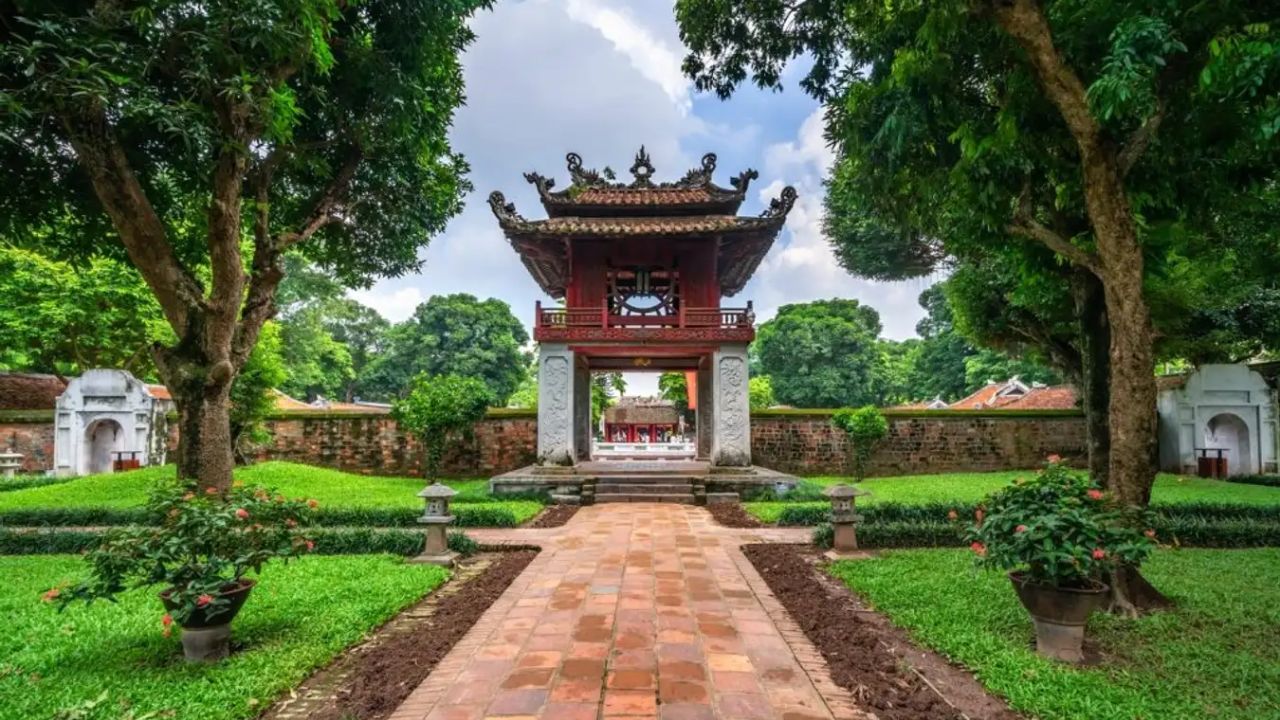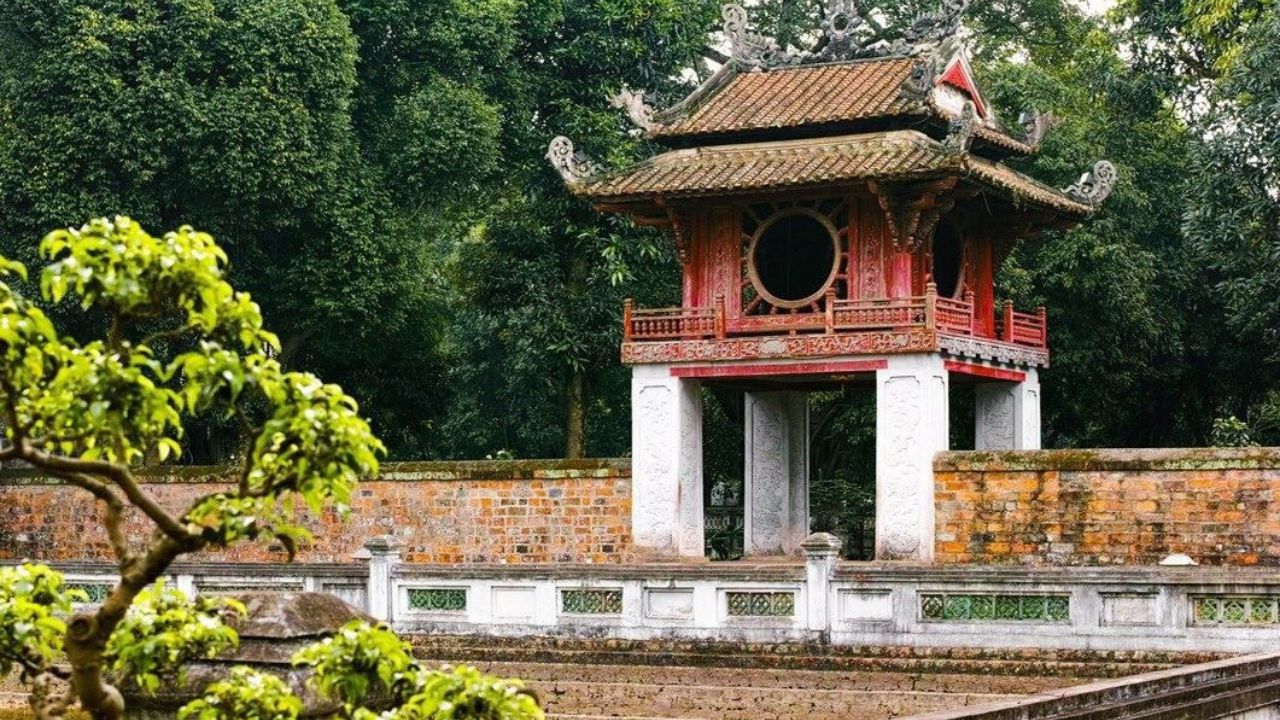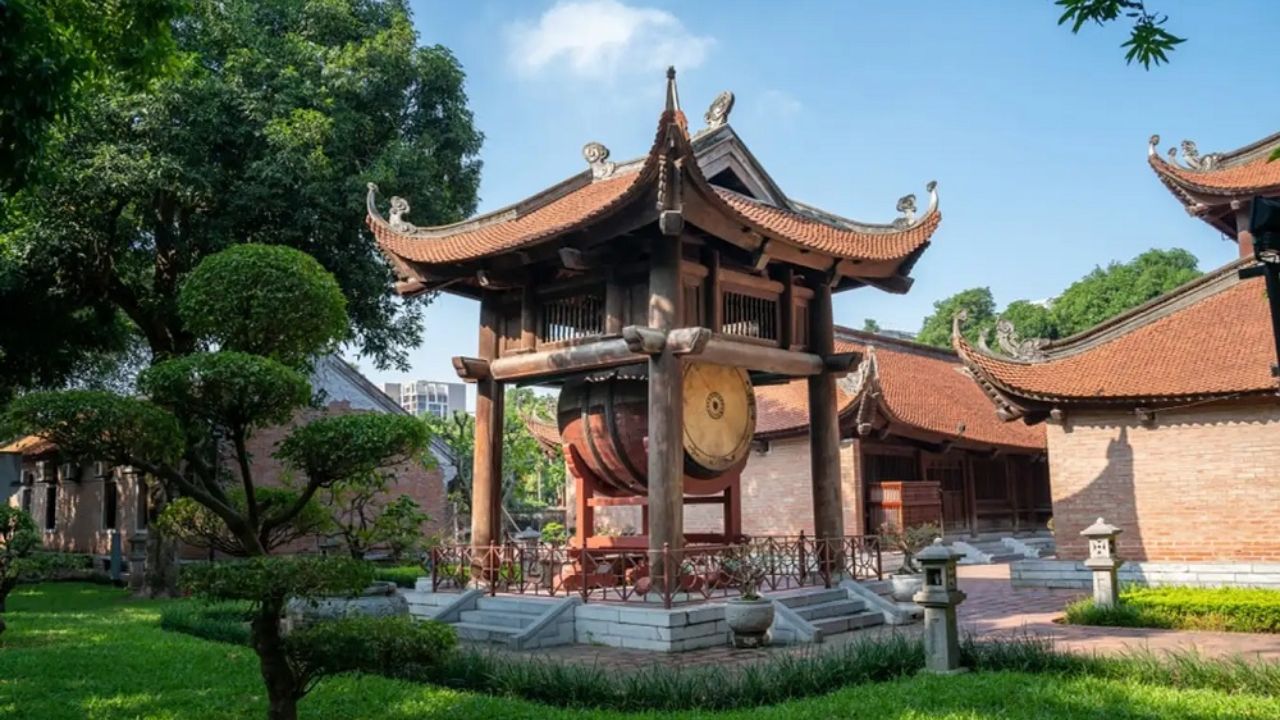Top 5 Most Famous 5-Star Hotels in Da Lat in 2025
Located in the heart of Hanoi, the Temple of Literature – Quoc Tu Giam is a unique historical and cultural complex that attracts both domestic and international visitors, not only for its ancient beauty but also for its long-standing historical values. To learn more about this must-visit destination, let’s explore with Phú Minh Quang Travel below!
Before beginning your journey, it is important to understand the history, opening hours, and entrance fees of this site in order to fully appreciate its special significance:
The Temple of Literature was first built in 1070, during the second year of the Than Vu era under King Ly Thanh Tong. It was originally a place to worship Confucius, sages, and scholars of Confucianism, as well as a learning center for royal family members. The very first student was Crown Prince Ly Can Đuc, son of King Ly Thanh Tong and Queen Mother Ỷ Lan. In 1076, King Ly Nhan Tong established Quoc Tu Giam, Vietnam’s very first university, which initially educated only members of the royal family before later being expanded to accept exceptionally talented commoners. From that moment, the Temple of Literature – Quoc Tu Giam became the national center of Confucian learning.

History of Temple of Literature
Throughout the centuries, the institution trained thousands of scholars and officials. Particularly during the Le and Nguyen dynasties, Quoc Tu Giam was regarded as the most prestigious school, where many great historical figures studied. Although the complex has undergone several restorations, it has preserved its ancient architecture and invaluable spiritual value—standing as a living testament to Vietnam’s tradition of learning and respect for knowledge.
Today, the Temple of Literature is open daily, including holidays, from 8:00 AM to 5:00 PM.
The entrance fee here is:
The site also offers guided tours in multiple languages such as English, French, Korean, Japanese, etc., making it an ideal destination for international travelers.
What makes the Temple of Literature truly captivating is its distinctly East Asian architecture. The complex is laid out symmetrically along a central axis, divided into five successive courtyards, connected by gates and gardens.
Curved roof tiles, mossy brick walls, and rows of ancient trees create a space that feels both solemn and tranquil. The traditional “front hall – rear sanctuary” design of Confucian architecture is applied harmoniously, conveying order and reverence. The structures not only reflect Confucian ideology but also highlight the craftsmanship and refined aesthetics of ancient Vietnamese builders.

Unique Architecture of Hanoi Temple of Literature
One of the most attractive things when coming to the Temple of Literature is exploring each construction, each place is associated with its own distinct historical and cultural values.
The Đại Thành Gate serves as the main entrance to the area dedicated to Confucius and other revered scholars. Solidly built with double roofs and intricate red-painted details, this gate marks the beginning of a sacred journey into history and wisdom.
Built in 1805, Khuê Văn Pavilion is one of Hanoi’s iconic symbols. Its unique design consists of a brick lower floor and a wooden upper floor with four circular windows symbolizing the enlightening power of knowledge. When sunlight shines through the windows, the pavilion radiates a mystical glow.
The Doctoral Steles are national treasures, honoring 1,304 scholars who passed the imperial examinations between the 15th and 18th centuries. Each stone tablet rests on the back of a turtle, symbolizing wisdom, perseverance, and longevity. These steles serve as historical records and embody Vietnam’s deep-rooted respect for education.
Located at the center of the complex, Thiên Quang Well is square in shape, symbolizing the earth, while the sky reflects on its surface, representing heaven. This harmonious balance signifies clarity and wisdom, offering visitors a peaceful spot for reflection.

Experience visiting the Temple of Literature
The Thai Hoc area was once dedicated to teaching and nurturing talents for the nation. Today, it still maintains its solemn presence with the Thái Học House and statues of Chu Văn An—one of Vietnam’s most exemplary teachers. This space gives visitors a deeper understanding of Vietnam’s historical education system.
Also housed in the Thai Hoc area, the great drum was traditionally used in important ceremonies. Its resonant sound carries spiritual significance, reminding people of the enduring value of education and the respect for scholars.
Besides daytime visits, travelers can experience the Temple of Literature – Quoc Tu Giam at night with a sparkling and magical atmosphere under the lights. Traditional art performances and light shows are regularly held, creating a unique harmony between the past and the present. This is definitely an experience not to be missed.
The Temple of Literature – Quoc Tu Giam is not only a historical and cultural landmark but also a symbol of Vietnam’s pride. It preserves the nation’s long-standing tradition of learning while offering visitors meaningful and unforgettable experiences. If you ever visit Hanoi, make sure to set aside time to explore this sacred and timeless destination.
Maybe you are interested
